SNEAKY SNIPES @ BLACKTOFT SANDS
- Jonathan Marshall
- Apr 18, 2019
- 5 min read

On Thursday I visited RSPB Blacktoft Sands which is located on the south banks of the River Ouse just before it merges with the River Trent to become the Humber a few miles east of Goole. The reserve was opened by the RSPB in 1973 and the reserve's tidal reedbed is the largest in England. Blacktoft Sands star species include Avocets, Bearded Tits, Bittern, Hen Harrier and Marsh Harrier. In 2015 and again in 2017 one of the UK's rarest birds of prey, the Montagu Harrier, nested at the site.
It was a warm sunny day when I arrived at Blacktoft Sands and in the trees lining the car park were Tree Sparrows, Wood Pigeons and a Dunnock. As I walked along the path to the Reception Hide (which doubles as the visitor centre) a male Pheasant walked across in front of me. After a quick stop at the Reception Hide I turned to the right and headed west and calling from the trees near the path were a Blackcap and a Cetti's Warbler. A little further along both birds flew across the path and over the reeds to the trees at the far side.
A little further along the path I arrived at the Xerox Hide and in a tree next to the door was a Reed Bunting. On the water in front of me I could see Mute Swans, Shovelers, Mallards, Tufted Ducks, Teals, Gadwalls and Canada Geese. Over to the left hand side I spotted a Little Grebe close to the reeds at the edge of the water, whilst over to the right there was a pair of Shelducks. There was a Marsh Harrier flying low over the reeds in the distance and a pair of Avocets flew from left to right over the water and disappeared over the reeds to my right.
From here I followed the path westwards to the Marshland Hide where just in front of the hide at the edge of the water was a Snipe hiding amongst the grass. A few seconds later the Snipe flew off and landed at the left hand side of the large lagoon. Out on the water and the islands were more than a hundred Black Headed Gulls as well as a couple of Gadwalls, Tufted Ducks and Greylag Geese. At the far side, close to the reeds, were a pair of Little Grebes and a single male Goldeneye.

I now left the hide to start the long walk to the Ousefleet hide. After retracing my steps for fifty or so yards I turned to my right and followed the path through the reeds and tall hedge and headed westwards again between the hedge and a grass bank to my left. Moving in and out of the hedge were Chaffinches, Magpies, Blue Tits and Magpies. After about three hundred yards the path turns right and heads into a line of trees with a field housing Konik Ponies to the left.
Out on the large expanse of water in front of the hide were several Shelducks, Shovelers, Greylag Geese and Avocets. To my right, on the edge of the water were several Teals asleep with the odd one waking up and swimming close to the hide before returning to where they had come from. There was also a small group of Wigeons on the grass to the left with a pair of Shelducks slowly walking across the grass to the water.
On the far side of the water was a quartet of Black Tailed Godwits and asleep on a small island was a pair of Oystercatchers. One of the Avocets now made its way round the front of an island about fifty yards in front of the hide. A Pied Wagtail flew over the water and behind the hide as a Redshank landed in the water before starting to hop towards the island. The reason why it was hopping became clear when it reached the island and onto it as the Redshank only had one foot.

I left the hide and headed back along the path through the trees to where the path turned left and headed back between the grass bank and tall hedge. Before I followed this part of the path I looked over a wooden gate to my right which looked into the field and on the far side I could see a pair of Wheatears. The Wheatears flew closer and started to make their way nearer and nearer with a Skylark landing on the grass bank to the left of them. A minute or so later they were joined by a third Wheatear before all three flew over the grass bank and landed on a fence before flying along the fence and out of sight.
I followed the path all the way back to the Reception Hide where there was a Blackcap in the trees and a Marsh Harrier flying over the reedbed. I moved on to the next hide which is called the First Hide where I could see Greylag Geese, Coots, Gadwalls, Mallards and a Little Grebe with a trio of Marsh Harriers flying over the reeds in the distance. Before I left the hide a single Avocet flew over the water and out of sight to the right.
As I walked to the next hide a Cetti's Warbler flew across the path and into the trees. The next hide is called Townend Hide where a large group of Avocets were asleep on an island about a hundred yards from me. Over to the right hand side was a pair of Mute Swans and just inside the reeds I could see a Coot sat on a nest. Towards the back of the water were Greylag Geese, Mallards, Tufted Ducks and Black Headed Gulls, whilst over to the near left hand side was a Little Grebe diving under the surface of the water.

There was also a lone Shelduck as a Grey Heron flew over from left to right and the trio of Marsh Harriers were still flying over the reeds but getting closer. One of the Marsh Harriers flew closer and closer before dropping down in the reeds over to the left. When it rose up and flew over the water the Avocets rose up as one and chased it off. A Reed Bunting was now ferreting along the reeds close to the level of the water as a Moorhen waded close by before flying off.
I walked on to the final hide which is the Singleton Hide where there were several Greylag Geese and Shelducks with a Cetti's Warbler singing from the bushes. Before I left I paid another visit to the Marshland Hide hoping that the Snipe would be right in front of the hide again. I sat down in the hide and the Snipe was sat down at the edge of the water in front of the hide, hiding behind a small clump of dry grass.

Out on the water were Gadwalls, Shovelers, Black Headed Gulls and around half a dozen Avocets. At the far side of the water were now three Goldeneyes and a Little Grebe and a pair of Greylag Geese circled overhead before landing at the right hand side of the water. A large group of Shovelers landed on the water as the Snipe woke up and made its way along the edge of the water from left to right.
In the grass growing in the water a little further along a Pied Wagtail landed briefly before flying off as a second Snipe scurried out from its hiding place and chased the other Snipe off. I left the hide and headed back along the path back towards the car park where in a tree next to the path was a Dunnock. As I reached my car a Song Thrush was making its way along the edge of a line of trees before turning and disappearing into the trees.
I have attached a few photos and a full sightings list from my visit to RSPB Blacktoft Sands.




























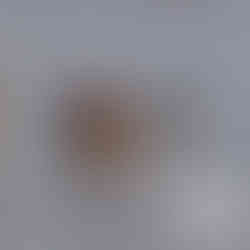


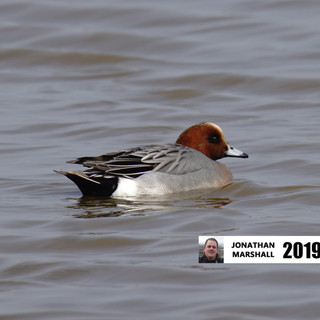



























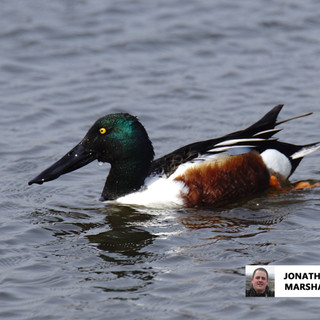














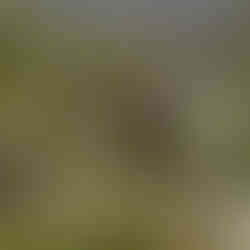







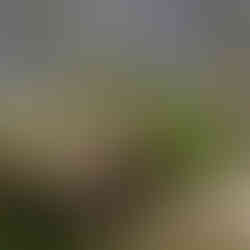








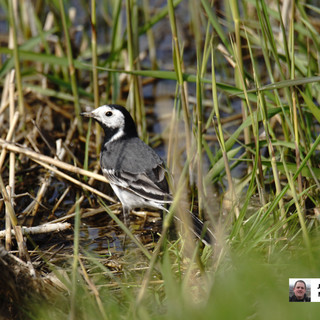






































Comments